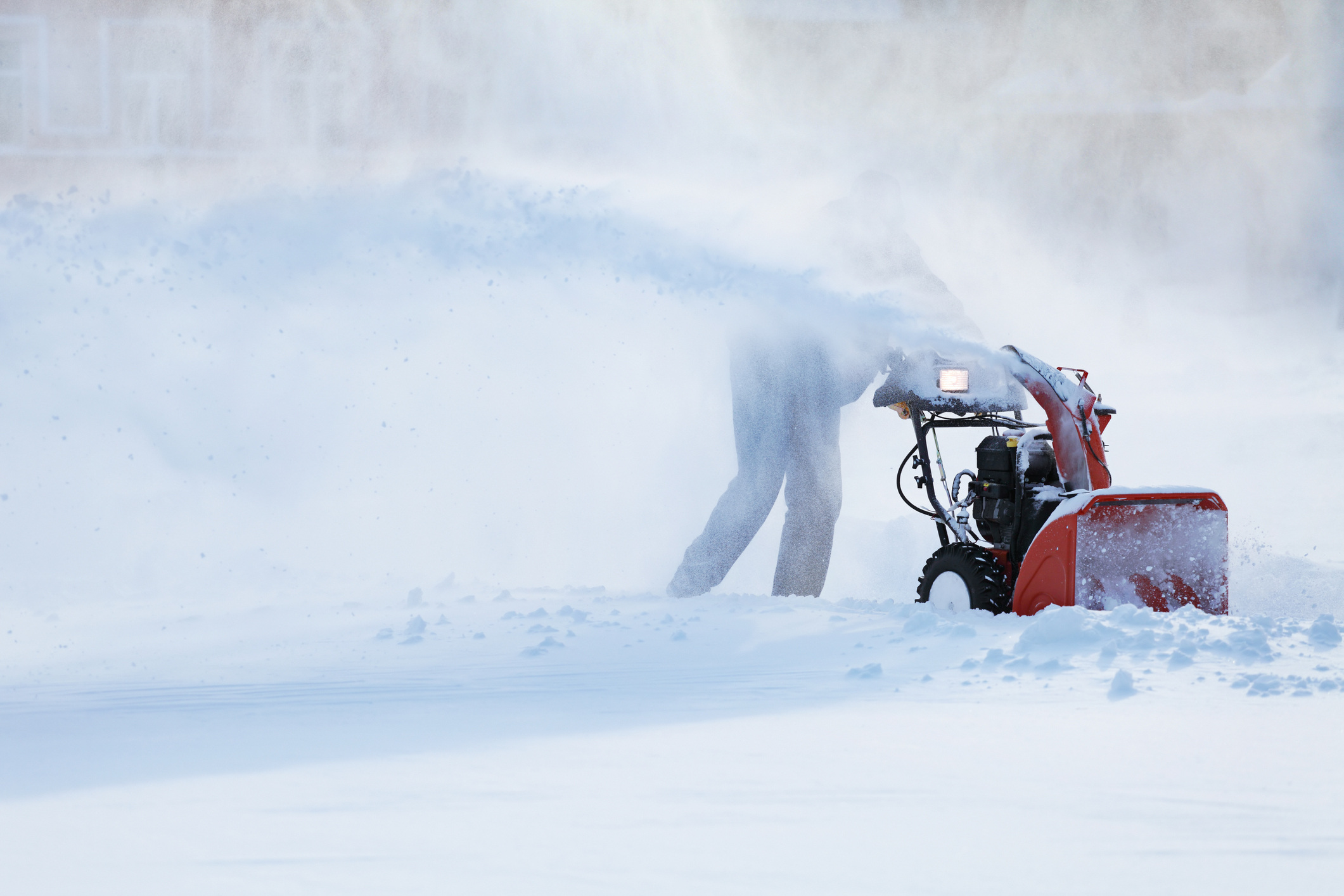It's never too early or too late to ensure your housing organization is well-prepared for the challenges posed by winter weather. Taking proactive measures can make all the difference between a minor inconvenience and a full-blown disaster.
“Winter preparations should be an annual exercise for maintenance teams,” said Elizabeth Owens, HAI Group's director of risk control and consulting. “Besides physical preparations like inspecting equipment and winterizing vacant units, emphasis should be placed on training for snow and ice removal, safe driving in winter conditions, preventing frozen pipes and ice dams, and resident safety during cold snaps.”
Here are five ways to prepare your housing organization for the winter season.
1. Winterize vacant units and buildings
Inspect vacant units and buildings regularly throughout the winter. Keep temperatures in vacant units at or above 55 degrees to avoid frozen pipes. Open kitchen and bathroom cabinets to allow warm air to circulate. Make sure the water supply to the unit is off and water lines are drained by opening faucets and flushing toilets. Windows and storm windows should be locked and closed.
“Take winterizing a step further in vacant units by adding a non-toxic RV antifreeze to any fixture and toilet traps once the lines have been drained,” Owens said. “Be sure to post signs, so everyone knows not to use the plumbing.”
Even if a building is completely vacant, it’s best to keep the heat at 55 degrees or above. However, the heat may be turned off if no sprinkler system is present and water is drained from supply lines, plumbing fixtures, and water heaters. If a sprinkler system is present, keep the heat on.
In occupied buildings, add efficiency by weatherproofing each unit. Check for drafts around windows, doors, wall joints, light fixtures, electrical outlets, attic doors, and plumbing. Stay on top of normal maintenance schedules and make sure heating systems are tuned up. Test smoke and carbon monoxide detectors, and make sure fuel-burning equipment is properly vented. Insulate any water lines running along exterior walls or unheated interior areas.
2. Provide snow and ice removal training

Snow and ice removal is a hazardous process—about 11,500 people are treated annually in U.S. emergency rooms for snow removal injuries. New or inexperienced staff members are especially at risk.
“The best way to address snow and ice removal concerns is to plan before the winter season,” Owens said. “Identifying the needs of your properties, as well as the capabilities of equipment and personnel, may save considerable time and prevent injuries during periods of heavy snowfall.”
-
Create snow removal guidelines, and make sure employees are aware of expectations and responsibilities during a winter storm.
-
Keep plenty of shovels, ice melt, and other snow and ice removal tools on site.
-
Tune up and test power equipment, including snowblowers. Make sure there’s always plenty of fuel available, stored safely outdoors or in an approved flammable liquids cabinet.
-
Train employees handling snow removal on how to safely use equipment to avoid injuries to themselves or others.
-
Identify areas to store snow, with snowmelt and runoff taken into consideration.
-
If using a snow removal contractor, make sure contracts are in place well ahead of the winter season. Require that contractors have the proper licensing and insurance and that they keep a detailed record of their activities.
When it comes to snow and ice removal, roofs are often overlooked. In regions with large snowfall totals, snow on a roof can lead to structural damage. Create a plan ahead of time that dictates how staff remove snow from roofs. For instance, if staff can safely remove snow on roofs from the ground, they should. Removing snow by sending staff on a roof surface is dangerous, but sometimes necessary. Always follow Occupational Safety and Health Administration (OSHA) guidelines for rooftop work.
3. Know the signs of frozen pipes
When pipes freeze, property managers face panicky calls from residents, buildings without running water, costly emergency repairs, and loss or damage to buildings and tenant property. The resulting damage can be costly. Property managers in every region of the country need to take winter safety measures to protect their buildings’ pipes.
“In warmer climates, buildings often lack proper insulation, increasing the likelihood of freezing when temperatures drop,” Owens said. “Be alert to warning signs—bulging pipes; frost-covered pipes; a lack of running water; or a sink, tub, or toilet that will not drain—and take immediate action to prevent pipes from cracking or bursting.”
The most common pipe freezes occur in unheated interior areas like basements, crawl spaces, and exterior walls with water supply lines. Consider placing ordinary thermometers in hard-to-heat rooms, closing unnecessary openings, and making provisions for monitoring unattended facilities.
If a pipe bursts, shut off the water (know where the water shut-off valve is located so it’s not a mystery during an emergency). If the burst is near electrical switches or fuse boxes, turn off electricity in that area. Contact a licensed plumber to help remedy the problem and remove as much water as possible. Consider calling a remediation vendor for assistance. Make sure all damage is documented, including photos, and contact your insurance carrier.

4. Learn to identify and remove ice dams
An ice dam is a ridge of ice that forms at the edge of a roof and prevents melting snow (water) from draining off the roof. The water that backs up behind the dam can leak into a building and cause damage to walls, ceilings, insulation, and other areas.
“To prevent ice dams, ensure attics are properly insulated and there is no significant heat loss through the roof,” Owens said. “Clean all gutters of debris prior to the colder weather to maintain drainage and prevent pooling ice from freezing in the gutter.”
Identify ice dams by looking carefully at the icicles around the exterior of your buildings. If they are confined to the gutters and there is no water trapped behind them, then an ice dam has likely not formed. Check for water stains or moisture in the attic or around the tops of exterior walls on the top floor of the building. Stains and moisture may indicate that an ice dam has formed and water has penetrated the roof membrane.

To safely melt the ice dam, fill a nylon stocking with calcium chloride ice melt and place it vertically across the ice dam so that it melts a channel through the dam (make sure you can safely position the ice melt on your roof, and make sure to use calcium chloride, not rock salt).
If you cannot safely reach the roof, avoid using a ladder in snowy and icy conditions. Consider hiring a contractor to remove the ice dam.
5. Help staff and residents prepare for cold weather

Severe cold weather includes snow or subfreezing temperatures, strong winds and ice, or heavy rainstorms. These conditions pose a risk to employees, residents, and property. Share these tips to help keep everyone safe and warm:
-
If possible, stay indoors during storms or stretches of cold weather.
-
Keep dry when outside; change wet clothing frequently to stay warm.
-
When outside, wear several layers of loose-fitting, lightweight, warm clothing instead of one layer of heavy clothing.
-
Outermost garments should be tightly woven and water-repellant.
-
Wear mittens or gloves. Keeping your hands dry and warm is extremely important.
-
A heavy winter hat prevents the loss of body heat.
-
Scarves placed over your nose and mouth can help keep your face warm.
Contact our Risk Control and Consulting team for more resources and answers to your housing organization’s risk-related questions.
This article is for general information only. HAI Group® makes no representation or warranty about the accuracy or applicability of this information for any particular use or circumstance. Your use of this information is at your own discretion and risk. HAI Group® and any author or contributor identified herein assume no responsibility for your use of this information. You should consult with your attorney or subject matter advisor before adopting any risk management strategy or policy.
HAI Group® is a marketing name used to refer to insurers, a producer, and related service providers affiliated through a common mission, management, and governance. Property-casualty insurance and related services are written or provided by Housing Authority Property Insurance, A Mutual Company; Housing Enterprise Insurance Company, Inc.; Housing Specialty Insurance Company, Inc.; Housing Investment Group, Inc.; and Housing Insurance Services (DBA Housing Insurance Agency Services in NY and MI).





-jpg.jpeg)
